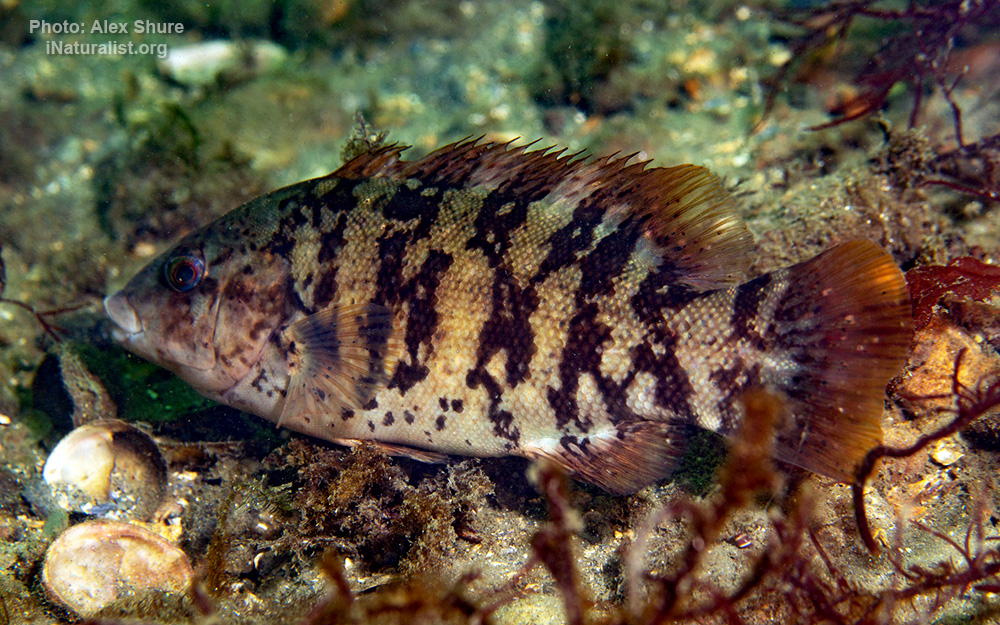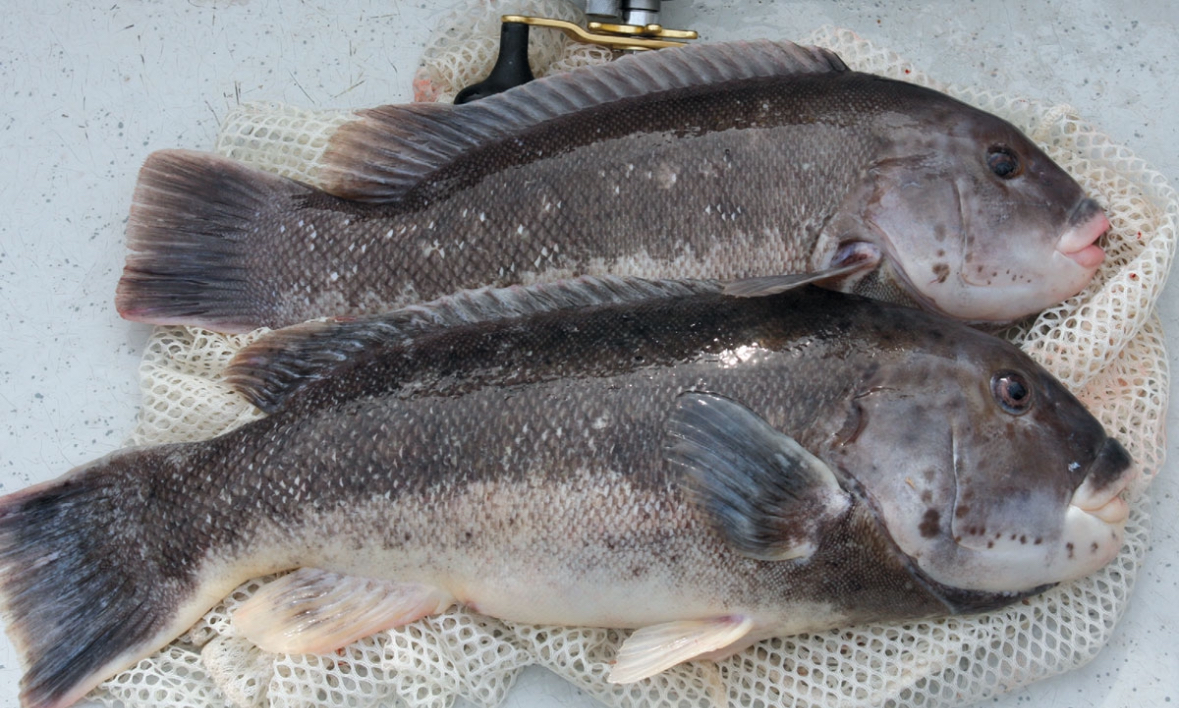Tautog
(Tautoga onitis)

Classification
General data
The tautog (Tautoga onitis), also known as the blackfish, is a species of wrasse native to the western Atlantic Ocean from Nova Scotia to South Carolina. This species inhabits hard substrate habitats in inshore waters at depths from 1 to 75 m (5 to 245 ft). It is currently the only known member of its genus.
Tautog are brown and dark olive, with white blotches, and have plump, elongated bodies.
They have a typical weight of 0.5 to 1.5 kg (1 to 3 lb) and reach a maximum of 90 cm (3 ft) and 13.1 kg (28 lb 14 oz).
Tautog have many adaptations to life in and around rocky areas. They have thick, rubbery lips and powerful jaws. The backs of their throats contain a set of teeth resembling molars. Together, these are used to pick and crush prey such as mollusks and crustaceans. Their skin also has a rubbery quality with a heavy slime covering, which helps to protect them when swimming among rocks.
Sports fishing
Popular among fishermen, tautog have a reputation for being a particularly tricky fish to catch. Part of this is because of their tendency to live among rocks and other structures that can cause a line to get snagged. The favorite baits for tautog include green crabs, Asian shore crabs, fiddler crabs, clams, shrimp, mussels, sandworms, and lobsters. Tautog fishing may also be difficult due to the tendency of fishermen try to set the hook as soon as they feel a hit, rather than waiting for the tautog to swallow the bait. Rigs with minimal beads, swivels, and hooks should be used to prevent entanglement with the rocks, reefs, or wrecks that tautog frequent.
Because they are found in wrecks, they are often seen by scuba divers.
They are also popular with spearfishermen.











